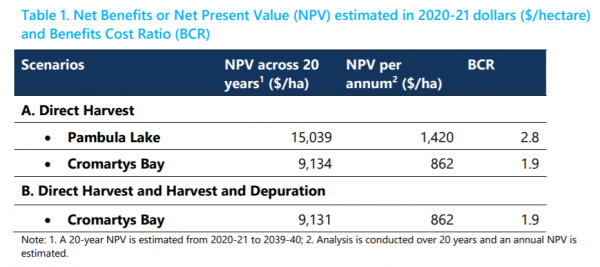This project is now complete. Phase 2, Transforming Australian Shellfish Production, is now underway.
NSW oysters’ reputation as some of the safest and tastiest may be attributed, in part, to the strong relationship that exists between oyster farmers and their regulator. The NSW Food Authority is vigilant about consumer safety. It stops oyster harvesting after heavy rainfall events, as run-off into the oyster-growing estuaries can lower salinity and trigger the growth of potentially harmful pathogens. Oysters are filter feeders, meaning they may pick up any contaminants and could pass them on to consumers.
Currently operations can’t reopen until testing confirms that water quality is okay for harvesting, but current methods use offsite laboratories in a process that can take up to seven days. This means oyster leases may be closed unnecessarily, costing farmers up to $100,000 a day in lost revenues.
The oyster industry needs a faster, more accurate means of testing water quality and safety.
Real-time water quality sensing combined with breakthrough molecular techniques and data-fuelled models, will enable the development of new digital tools that improve regulatory procedures and help farmers improve harvest management.
State-of-the-art sensors designed by The Yield have been deployed across key oyster-producing regions of NSW, collecting real-time environmental data. Water metrics, such as temperature, salinity and dissolved oxygen, are then being tracked by UTS researchers and mapped alongside water samples collected regularly by participating farmers.
Correlations that are identified between key environmental metrics and water contaminants will form models to enable real-time closure regulation and power the development of new digital management tools for the industry.
The first stage of this project was a series of farmer engagement workshops and sensor installations which took place in June 2018. The key takeaways from these workshops can be viewed at https://www.foodagility.com/posts/nsw-oyster-faqs.
This text was originally published by the NSW Food Authority.
The 2017-2020 Food Agility CRC oyster industry transformation project used data from real-time sensors in 13 NSW oyster producing estuaries, measuring salinity, temperature and water height in shellfish harvest areas.
Salinity data from this project can be used to refine harvest area management plans, potentially increasing future harvest opportunities. Project data will also support the development of models for harmful algal bloom and oyster mortality events to assist in refining farm management practices for industry.
Oyster producers at Pambula Lake and Cromartys Bay (Port Stephens) were early adopters of salinity-based harvest area management plans using real-time sensor data. An independent economic assessment by the NSW Department of Primary Industries (DPI)on the use of sensors in these areas reported a positive economic impact for both harvest areas, due to increased harvest opportunities.
The economic assessment found a positive annual net benefit (profit after all operational costs, including sensor installation and maintenance) in both case study harvest areas:
Based on the current harvest area, this equates to an annual net benefit of $95,736 in Pambula Lake (67.42 hectares) and $15,344 in Cromartys Bay (17.8 hectares).

Results showed the total cost of a sensor may be recovered in the first year of operation in Pambula Lake (at a sensor cost of $429 per business) and the second year in Cromartys Bay (at a sensor cost of $1,714 per business).
Sensitivity analysis within the report showed a positive economic benefit if there was damage to the real-time sensor that required a replacement within the second year of its operation. The report also considered changes in interest discount rates or farm gate price for shellfish, which all showed positive NPVs.
The benefits of using real-time sensors are transferable to the wider shellfish industry. Apart from increase in harvest opportunities, the report showed there were other likely benefits for adopting real-time sensors in shellfish growing areas:
Read the findings and results in full by downloading the Net Returns of Real-Time Sensors and Salinity-Based Management Plans in NSW Oyster Production report.
For a summary of the findings download a copy of the Net Returns of Real-Time Sensors and Salinity-Based Management Plans in NSW Oyster Production factsheet.
View videos on the Food Agility CRC project at: Food Agility CRC – Cooperative Research Centre customer story
Postdoctoral Research Fellow at the University of Technology Sydney
Associate Professor at the School of Life Science at the University of Technology Sydney.
Read As. Prof. Murray's profile.
Research Fellow at the School of Life Sciences at the University of Technology Sydney.
Shellfish Operations Officer NSW Shellfish Program at New South Wales Government (DPI NSW)